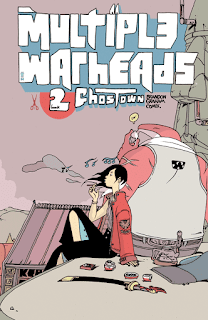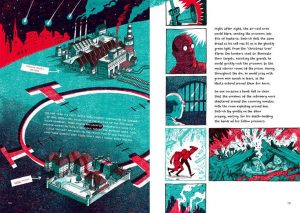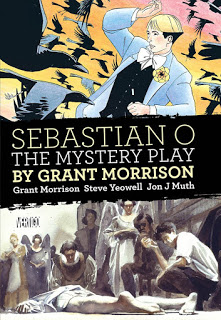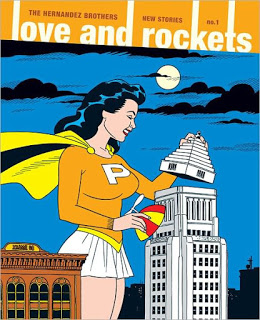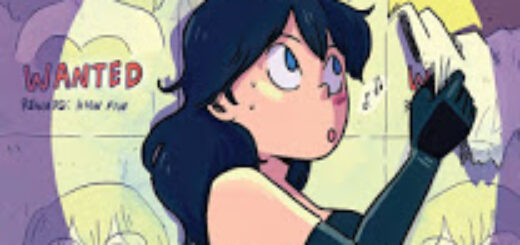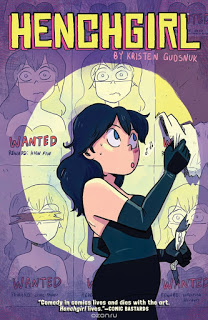Book-A-Day 2018 #285: High Society by Dave Sim
I don’t have an accurate record of when Dave Sim first said Cerebus would run for 300 issues. But my guess is that his plans became real during this storyline.
The first volume of Cerebus, which I covered last month , saw Sim moving rapidly from an amusing Thomas/Smith Conan parody with an oddly funny-animal main character to something more detailed and particular, and those twenty-five issues moved from standalone stories to trilogies and ongoing continuous plotlines.
No one expected Sim would then embark on a new story that would be as long as all of Cerebus to date. My guess is that not even Sim knew, when he was writing and drawing issue #26, “High Society,” that that would be the title for a much longer story. Somewhere in those first few High Society issues, though, it clicked: he wasn’t just making a somewhat longer story: his narrative would stick around the city-state of Iest for more than two years of serial comics, over five hundred pages, and more political machinations than anyone had ever seen on the comics page.
So it became High Society. And a storyline many times longer than the previous ones posed a problem to Sim in the mid-80s. He was already a pioneer in reprinting his comics in permanent book editions, with the Swords of Cerebus series. But the sixth volume of that was already longer than the previous ones, reprinting five issues instead of four. Swords of Cerebus Seven would either be five times as long as the previous book or would break in the middle of the story.
Obviously it didn’t. Instead, Sim invented the “phone book” format — one little-used by other creators since, mostly because very few comics-makers have series with multiple five-hundred-page long plotlines to begin with. (He also annoyed the comics distribution network by going entirely direct-to-consumer for the High Society first printing, an innovation that made him money immediately but caused hassles for a while afterward.)
We tend to forget all of the business things Sim pioneered in independent comics, but there’s no Image without Sim, without that model of doing your comics your way, and then collecting them permanently. And this is the era when Sim was still exciting and vital and fizzy and Zeitgest-y, telling his own story and making sarcastic comments on the current comics scene at the same time.
High Society is probably the single highest point of Cerebus: a graphic novel that can stand alone and that a new reader can come into cold. Cerebus is this guy arriving in a new city, and then stuff happens to him: you don’t need to know more than that, and the first page tells you that much.
“Stuff happens” gets very baroque very quickly: Cerebus is caught up in other people’s schemes, as had been more and more central as the comic Cerebus went on the early ’80s, and the ultimate mover of those schemes was Sim’s brilliant re-imagining of Groucho Marx as Lord Julius, ruler of Palnu. [1]
High Society is a story about money and power, and particularly the power of money. Palnu is the only fiscally sound city-state in the entire Feldwar valley; every other country is running massive deficits and getting further and further in debt to Julius. Cerebus is the perfect counterweight to Palnu’s soft power, since he’s instinctively a creature of hard power: he knows armies and mercenaries and war tactics deeply, and his first instinct in any situation is to find and army and conquer something.
(This is not a good impulse in a modern world, obviously. But that raises the question of how modern Cerebus‘s world is. Is it modern enough that wars of conquest primarily smash economic activity and leave everyone poorer, or is it still medieval enough that conquest can be lasting and profitable?)
So Cerebus is first the Ranking Diplomatic Representative of Palnu to Iest, named as such without his knowledge. And then there’s a confusing plot where he’s running to keep that title, even though it’s pretty obviously a role that is going to always be in the direct remit of the ruler of the sending country. (How could it be otherwise?)
But that campaign ends up being the warm-up for the real one: Cerebus runs for Prime Minister of Iest, a job that has first slowly and then suddenly transformed from being a minor adjunct to a theocracy to being the center of secular power in the city-state. And that “suddenly” is because of Cerebus personally, in the sideways complicated manner common to Cerebus plots.
Like the best Cerebus plots, High Society is a one-damn-thing-after-another story. Cerebus is always his own worst enemy; he’s never satisfied with what he has and is the epitome of the guy who hits on sixteen every damn time. And Sim was notably never on Cerebus’s side, which is rare for a creator so closely identified with a single character. Cerebus is a horrible person in a whole host of ways, and was like that right from the beginning: Sim made him that way, and kept putting him in plots that exploited his flaws and worst tendencies. For about the first half of his adventures, Cerebus is the greatest anti-hero in comics.
Alongside all of the politics and plotting is Sim’s characteristic humor: he was the most consistently funny comics humorist of the early ’80s, and this volume has a string of his greatest hits. Sure, a lot of that humor was odd adaptations of other people’s characters — every funny character in Cerebus is based on a comedian or outside source — but Sim turned it all into comics, made it all work in his specific invented world, and gave all of those characters new, setting-appropriate jokes to tell. It’s hugely idiosyncratic, but it works amazingly well.
If you’ve never read Cerebus, and you’re willing to give Dave Sim one shot, this is the shot to take. Some parts of it are more meaningful, or funnier, if you’ve read the stories in the first collection, but I don’t think anything will be incomprehensible or particularly obscure. This is a great story about a grumpy, self-destructive guy who falls into politics in the worst way, in a vaguely late-medieval world where parts are rapidly modernizing, and has a masterful mix of humor and seriousness. If any of that sounds appealing, give it a try.
[1] Julius would make an interesting contrast to Terry Pratchett’s Patrician: both rule completely and capriciously, and both are shown to be master manipulators who always come out on top. But the Patrician works by extreme clarity and veiled threats, while Julius is his world’s master obfuscator and equivocator and either is the most Machiavellian planner of all time or just extremely good at thinking on his feet.
![]()
![]()
Reposted from The Antick Musings of G.B.H. Hornswoggler, Gent.
















